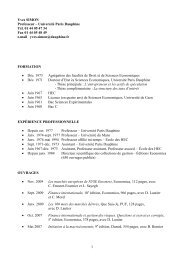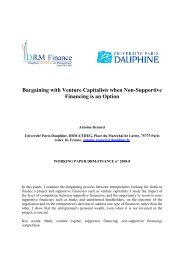Corporate governance and earnings management ... - CEREG
Corporate governance and earnings management ... - CEREG
Corporate governance and earnings management ... - CEREG
You also want an ePaper? Increase the reach of your titles
YUMPU automatically turns print PDFs into web optimized ePapers that Google loves.
application of this “new” doctrine, at least for goodwill. It was only in the 1960s <strong>and</strong> 1970s<br />
that the dynamic doctrine came to dominate in treatment of goodwill in a period of slacking<br />
stock markets, <strong>and</strong> big failures showing that the defence of creditors by the state was no more<br />
the worry of the state which prompted some economics to wonder if the corporation “can<br />
survive” (Jensen & Meckling, 1978).<br />
Although it was not absolute (as we shall see below), this domination is clear in both<br />
regulations <strong>and</strong> practices. The main explanatory factor is the introduction of particularly<br />
interesting measures for companies. Nelson (1953), a practitioner, develops a “momentum<br />
theory of goodwill” to advocate the amortization of goodwill.<br />
In terms of regulations, the main official document reflecting the domination of dynamic<br />
practices is APB Opinion No. 17 of 1970, which stipulates that “all assets which are<br />
represented by deferred costs are essentially alike in historical-cost based accounting” <strong>and</strong><br />
that goodwill, in keeping with this view, must be “amortized by systematic expenses over a<br />
certain period”. This effectively cancelled out the options left open by ARB 43 ch. 5, which<br />
had favored write-offs. It is worth while noting that the same year 1970 the APB adopted the<br />
Statement No. 4, Basic concepts, <strong>and</strong> specified that “assets also includes certain deferred<br />
charges that are not resources but that are recognized <strong>and</strong> measured inconformity with<br />
GAAP” (§ 132). At that time this was the definitive victory of the dynamic theory <strong>and</strong><br />
goodwill could be at last treated as a respectable cost-asset!<br />
In terms of practices, the study by Hughes (1982) referred to above shows that although the<br />
practice of systematic amortization stagnated from 1958 to 1959, once the regulation of 1970<br />
came into force there was a resulting increase in this type of treatment. It was clearly the<br />
majority choice by 1972, <strong>and</strong> had become the dominant practice by around 1975.<br />
But it was a hard-won victory. To persuade a majority of companies of the merits of the<br />
dynamic approach, the APB had to allow them to use a very long amortization period for<br />
goodwill: up to 40 years. This was well in excess of the periods proposed by the early<br />
45



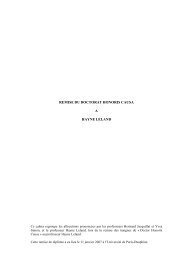

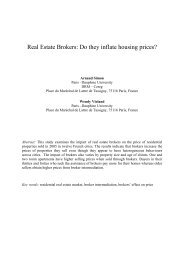
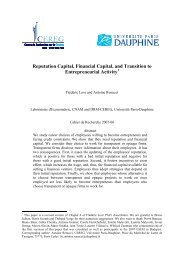

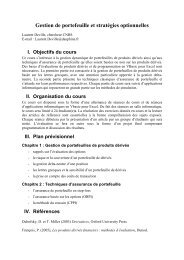



![& 6 ] ^ F ]^ - CEREG - Université Paris-Dauphine](https://img.yumpu.com/33326502/1/184x260/-6-f-cereg-universitac-paris-dauphine.jpg?quality=85)

